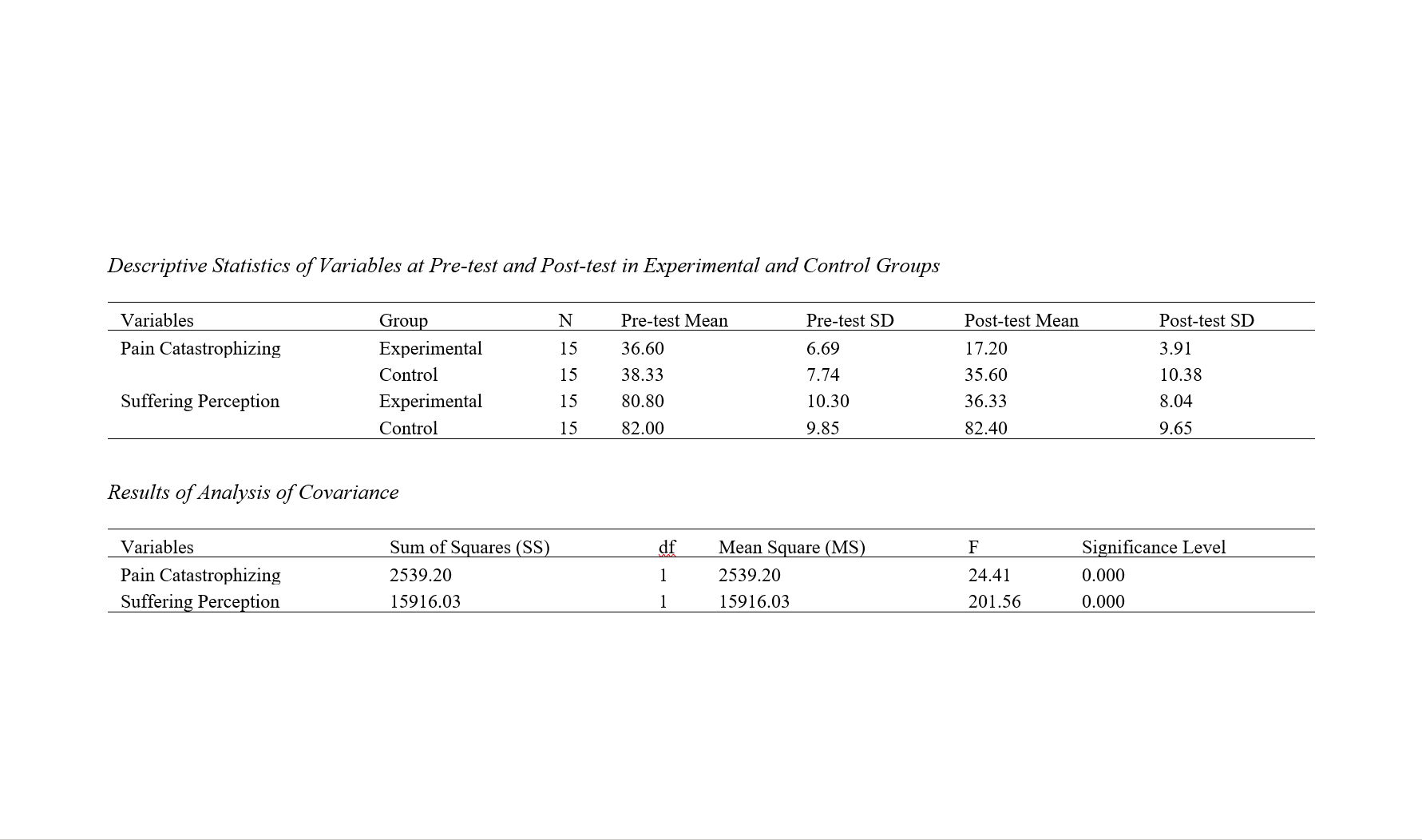The Effectiveness of Intensive Short-Term Dynamic Psychotherapy on Pain Perception and Pain Catastrophizing in Women with Breast Cancer
Keywords:
Intensive short-term dynamic psychotherapy, Pain perception, Pain catastrophizing, Breast cancerAbstract
Objective: The aim of the present study was to investigate the effectiveness of intensive short-term dynamic psychotherapy on pain perception and pain catastrophizing in women with breast cancer.
Methods: In this quasi-experimental study, 30 women with breast cancer who referred to Imam Khomeini Hospital in Sari in 2024 were studied using convenience sampling. They were then randomly assigned to two groups: the short-term intensive psychodynamic intervention group (15 participants) and the control group (15 participants) without any intervention. The short-term intensive psychodynamic intervention was implemented according to the protocol by Teska et al. (2005) over 16 weekly sessions, each lasting one and a half hours. The samples were assessed at two stages, pre-test and post-test, using the Pain Perception Questionnaire by Schaal et al. (2010) and the Pain Catastrophizing Scale by Rahmati et al. (2017). Data were analyzed using repeated measures multivariate analysis of variance in SPSS24 software.
Findings: In the intervention group, the mean scores for pain catastrophizing were (17.20±36.60) and for pain perception were (36.33±80.80) in the pre-test and post-test stages, respectively. Post-test scores significantly decreased compared to pre-test scores in the components of pain catastrophizing and pain perception in the experimental group compared to the control group. Additionally, the results showed that intensive short-term dynamic psychotherapy had a statistically significant effect on pain catastrophizing (P<0.05, F=24.41) and pain perception (P<0.05, F=56.201) after adjusting the means of the two groups based on the pre-test score.
Conclusion: The results indicate the effectiveness of intensive short-term dynamic psychotherapy on pain catastrophizing and pain perception in women with breast cancer. Therefore, this therapy can be used alongside other medical treatment methods in hospitals and clinics dedicated to breast cancer patients to reduce the psychological needs and problems of women with this condition.
Downloads

Downloads
Additional Files
Published
Submitted
Revised
Accepted
Issue
Section
License

This work is licensed under a Creative Commons Attribution-NonCommercial 4.0 International License.




















